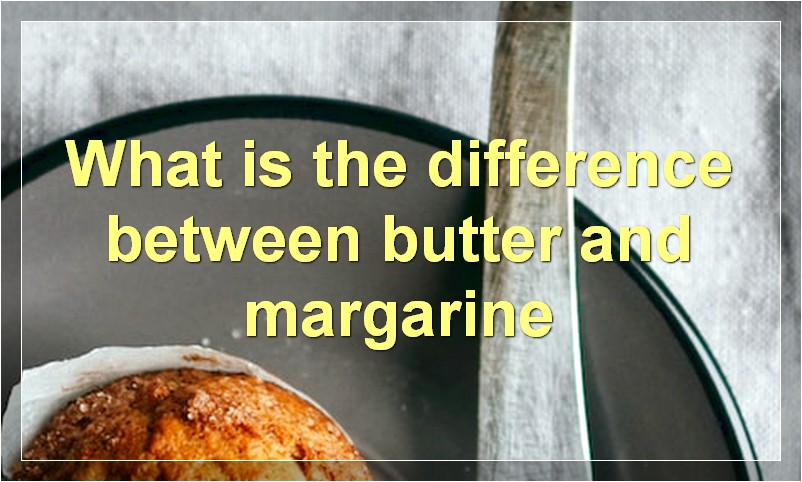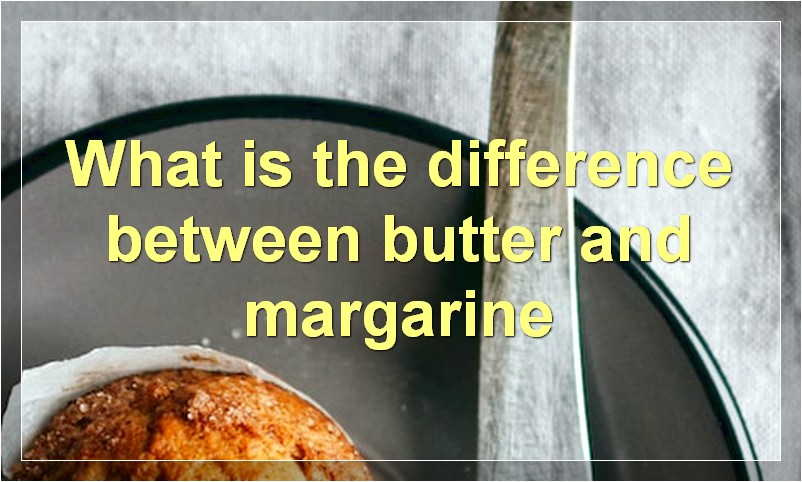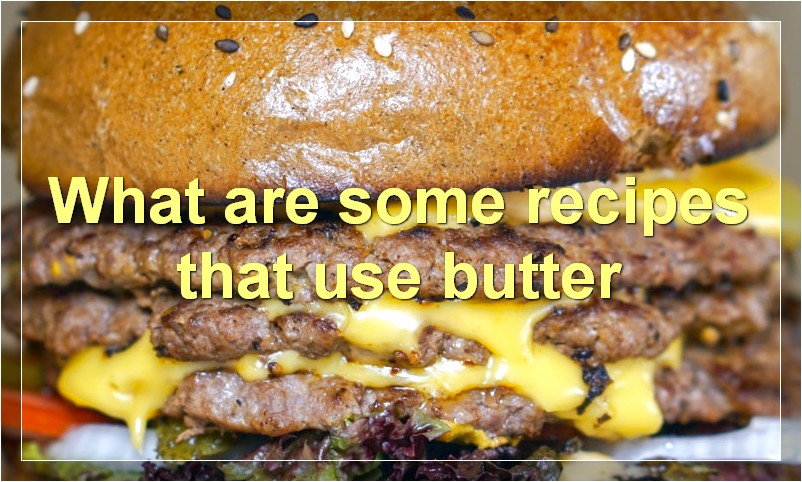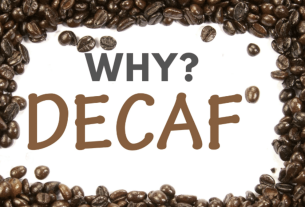If you’re anything like me, you love the taste of butter. Whether it’s on toast, in cookies, or melted over vegetables, there’s just something about that creamy goodness that makes everything better. But have you ever wondered how butter is made? Or what the difference is between butter and margarine? Maybe you’re curious about how long butter lasts, or how it should be stored. Maybe you’ve even wondered if you can freeze butter.
In this article, we’ll explore all things butter. We’ll discover how it’s made, what the difference is between butter and margarine, how long it lasts, how it should be stored, and some interesting facts about this delicious dairy product. So grab a stick of butter and let’s get started!
How is butter made
Butter is a dairy product that is made from cream. The cream is separated from the milk and is churned to create butter. Butter has been a part of the human diet for thousands of years and is used in many different ways.
Butter is made from cream, which is the fatty part of milk. The cream is separated from the milk using a centrifuge. Once the cream is separated, it is placed in a churn. The churning process agitates the cream and causes the butterfat to separate from the liquid. The butterfat is then collected and formed into butter.
Butter has been a part of the human diet for thousands of years. It was first mentioned in literature around 3,000 BC. In ancient times, butter was used as a fuel for lamps and as a waterproofing agent for boats. Today, butter is used in baking, cooking, and as a spread on bread.
What is the difference between butter and margarine
There are many differences between butter and margarine, but the most notable difference is that butter is an animal product made from cream, while margarine is a plant-based product made from vegetable oils.
Butter has been around for centuries, while margarine was only invented in the 19th century. Butter is made by churning cream until it becomes solid, while margarine is made by mixing vegetable oils with water and emulsifiers.
Butter contains more saturated fat than margarine, which can make it harder to spread and can also raise your cholesterol levels. Margarine usually contains trans fats, which are considered to be even worse for your health than saturated fats.
Butter tastes richer and creamier than margarine, which some people prefer. Margarine often has a bland taste, although there are now many brands that add flavoring to their products.
So, what is the difference between butter and margarine? Butter is an animal product made from cream, while margarine is a plant-based product made from vegetable oils. Butter contains more saturated fat than margarine, which can make it harder to spread and can also raise your cholesterol levels. Margarine usually contains trans fats, which are considered to be even worse for your health than saturated fats.
How long does butter last
Butter is a dairy product made from the fat and protein of milk. It’s a popular ingredient in many recipes, from cakes and cookies to sauces and sautéed vegetables.
But how long does butter last? That depends on its storage conditions. Butter can be kept in the fridge for several weeks or in the freezer for up to six months. If you’re not sure how long your butter has been stored, there are a few simple ways to tell if it’s still good to use.
The first thing to look for is signs of spoilage, such as mold or an off odor. If the butter looks or smells bad, it should be discarded.
Another way to tell if butter has gone bad is to give it a taste test. Good butter will have a rich, creamy flavor, while bad butter will taste rancid or sour.
If you’re not sure whether your butter is still good, err on the side of caution and throw it out. It’s better to waste a little butter than to risk food poisoning.
How should butter be stored
Butter is a dairy product made from the fat and water in milk. It is an essential ingredient in many recipes, from savory to sweet. But how should you store butter to keep it fresh and flavorful?
Here are a few tips:
-Butter should be stored in a cool, dark place. The fridge is ideal, but if your kitchen is particularly warm, you may want to store butter in the freezer.
-Wrap butter tightly in parchment paper or plastic wrap to prevent it from picking up odors from other food in the fridge.
-If you’re planning to use butter within a week or so, there’s no need to freeze it. Just keep it well wrapped in the fridge.
-Butter can be frozen for up to six months. Be sure to wrap it tightly so it doesn’t pick up any off-flavors from the freezer.
-Thawed butter should be used within a week or so. If it has been frozen for longer than that, it may have some texture changes and may not be as suitable for baking.
So there you have it! A few simple tips for storing butter. By following these guidelines, you can be sure that your butter will be fresh and flavorful every time you use it.
Can you freeze butter
When it comes to freezing butter, there are a few things you need to know. First of all, butter freezes really well. In fact, it’s one of the best things to freeze because it doesn’t change texture or taste when it’s thawed. That means you can always have butter on hand, even if you don’t live near a grocery store.
The best way to freeze butter is to wrap it tightly in plastic wrap or aluminum foil. You can also put it in a freezer-safe container with a tight-fitting lid. Be sure to label the butter so you know how long it’s been in the freezer. Butter will keep for up to six months in the freezer.
When you’re ready to use frozen butter, just take it out of the freezer and let it thaw at room temperature. Don’t try to hurry the process by putting it in the microwave, as this can change the texture of the butter. Once the butter is thawed, you can use it just like you would fresh butter.
So there you have it, everything you need to know about freezing butter. Now you can always have butter on hand, no matter where you live.
What are some recipes that use butter
When it comes to recipes, there are few ingredients as versatile as butter. This dairy product can be used in sweet or savory dishes, and it lends a rich flavor to whatever it is added to. Here are a few recipes that make use of butter:
1. Cinnamon Sugar Swirl Bread – This delicious bread is made by swirling cinnamon sugar and butter together in a yeasted dough. The result is a sweet and fragrant loaf that’s perfect for breakfast or dessert.
2. Herb Roasted Chicken – Chicken breasts are rubbed with a mixture of butter and dried herbs, then roasted to perfection. The result is juicy, flavorful chicken that’s sure to please any crowd.
3. Garlic Butter Baked Salmon – This healthy and flavorful recipe features salmon fillets that are baked with a garlic butter sauce. It’s a quick and easy weeknight meal that the whole family will love.
4. Old-Fashioned Apple Pie – This classic pie is made with a flaky pastry crust and a filling of tart apples, sugar, and spices. A dollop of buttery whipped cream makes it even more irresistible.
5. Chocolate Chip Cookies – These classic cookies are made with butter, brown sugar, and plenty of chocolate chips. They’re perfect for satisfying any sweet tooth.
What are some substitutes for butter
Assuming you would like an article discussing substitutes for butter in general:
When it comes to baking, there is no true substitute for butter. That being said, there are some suitable replacements depending on your needs. For those looking for a vegan or dairy-free option, coconut oil is a good bet. It has a similar consistency and can be used in most recipes that call for butter. Just keep in mind that it will add a slight coconut flavor to whatever you’re making.
If you’re trying to cut back on calories, there are a few options available. Applesauce and mashed bananas are both good substitutes in many baked goods recipes. You can also find margarine that is specifically designed for baking. These products usually have a higher fat content than regular margarine, so they’ll produce results more similar to using butter.
Finally, if you need a butter substitute for cooking, any type of vegetable oil will work. Olive oil, avocado oil, and even peanut oil can be used in place of butter when sautéing or frying foods. Just be aware that they will change the flavor of your dish, so use them accordingly.
What are some brands of butter
There are many brands of butter on the market today. Some of these include:
1. Kerrygold
2. Land O’Lakes
3. Plugra
4. President
5. private label brands
Kerrygold is one of the most well-known brands of butter, and for good reason. It hails from Ireland and has a unique taste that is beloved by many. It is also a bit pricier than other brands, but many say it is worth the extra cost.
Land O’Lakes is another very popular brand of butter. It is made in the United States and has been around for quite some time. It is a bit cheaper than Kerrygold, but still has a very good flavor.
Plugra is a French butter that is becoming increasingly popular in the United States. It has a very rich flavor and is perfect for those who want to add a bit of luxury to their cooking.
President is another French butter that is becoming more popular in the United States. It has a milder flavor than Plugra, but is still very delicious.
Private label brands are a great option for those who want to save money on their butter purchases. These brands are often just as good as the name brands, but are much less expensive.
What is the nutritional value of butter
Butter is a dairy product that is made from the fat and water in milk. It is a solid at room temperature but will melt when heated. Butter is used in cooking and baking and gives food a rich flavor.
Butter is high in saturated fats and cholesterol and should be eaten in moderation. It also contains vitamins A, D, E, and K.
What are some interesting facts about butter
Did you know that butter has been around for thousands of years? In fact, the first recorded use of butter dates back to 3,500 BC! Butter is made from cream (or milk) that has been churned to separate the solid fat from the liquid. The solid fat is then whipped to create a spreadable product.
Butter is a dairy product that is made from cream (or milk) that has been churned to separate the solid fat from the liquid. The solid fat is then whipped to create a spreadable product.
Butter is a good source of vitamins A and E, and it also contains trace amounts of several other vitamins and minerals.





